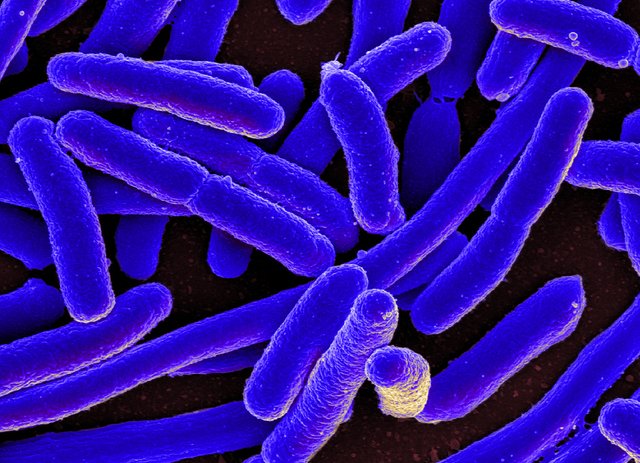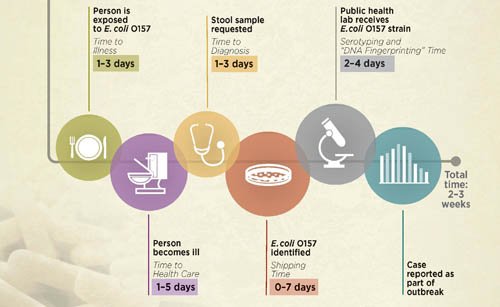E.coli
E. coli is easy to grow and maintain with optimal growth occurring at body temperature, and thriving to form large populations. They are small, yet very rarely dangerous and they can be found naturally in the body. They have the ability to reproduce quickly and form populations in as little as 20 minutes under specific conditions. The colonies grow so large that they can be seen with the naked eye and can grow in as little as a few mL of media. The fast reproduction and conditions in which they can grow make them perfect for experimentation/observation.
Richard Lenski used E. coli to study evolution, he grew E. coli in serial broth cultures for a long time and made observations. Every 24 hours, 1% of each population of each colony transferred to new flask of nutrient broth. These populations ranged in size from 300 to 500 million cells. Every 500 generations, a portion of each population was frozen, the generations were formed quickly allowing for this experiment to happen. The frozen cells remained viable, creating a “frozen fossil” record which could be used at any time. The cells remained alive and could still be used, as E. coli can survive in a large range of temperature. This was done for each of the 12 populations observed and growth was indicated by the cloudiness of the broth. Each day the bacteria population went through almost 7 generations, and in a year, each population would go through about 2,400 generations.

After 16 years of the experiment it was observed that flask #9 was cloudier than the other flasks which means the growth of E. coli was occurring. It was possible that the E. coli in flask #9 could have evolved in order to have the ability to grow on citrate. Bacteria grows in a medium which involves glucose and citrate molecules. E. coli is unable to use citrate in its experimental environment because a high amount of oxygen is involved. Under non-environmental conditions citrate is included as a binding agent. Then, it helps E. coli obtain iron from the broth for many cellular functions. Citrate can only be transported into E. coli cells in anoxic conditions (low amount of oxygen) conditions. The LTEE was conducted in oxic (high amount of oxygen) conditions. Theoretically, citrate can’t be transported into the cell during oxic conditions and it can’t be used for ATP production, but Flask #9 showed signs of growth which indicates the evolution of E. coli.

The higher the growth rate the more variants there are for a change to adapt to their environment. This means that the more offspring produced can lead to different mutations to occur and the process of natural selection can take place, which allows for the population to adapt to their environment better and quicker. Once citrate enters the cell, it can be metabolized in Citric Acid cycle reactions. If citrate could get into the cell, then bacterium could metabolize it in Citric Acid cycle reactions which results in a significant increase in the energy available. Cit+ cells are able to utilize citrate in the citric acid cycle immediately rather than having to produce it from acetyl-CoA and oxaloacetate. Succinate is eventually produced and is moved out of the cell by the CitT antiporter protein in exchange for more citrate. Citrate has more potential energy than succinate, as it is able to produce more of reduced NAD (NADH, H+) for use in oxidative phosphorylation versus succinate.
Nice write up!
Another fun writeup to do would be talking about how cellular live evolved from ones which existed in purely an anerobic environment to ones which could tolerate oxygen for metabolic processing.
Keep up the great work @kajalpats
Upvoted
Hi! This post has a Flesch-Kincaid grade level of 10.3 and reading ease of 58%. This puts the writing level on par with Michael Crichton and Mitt Romney.